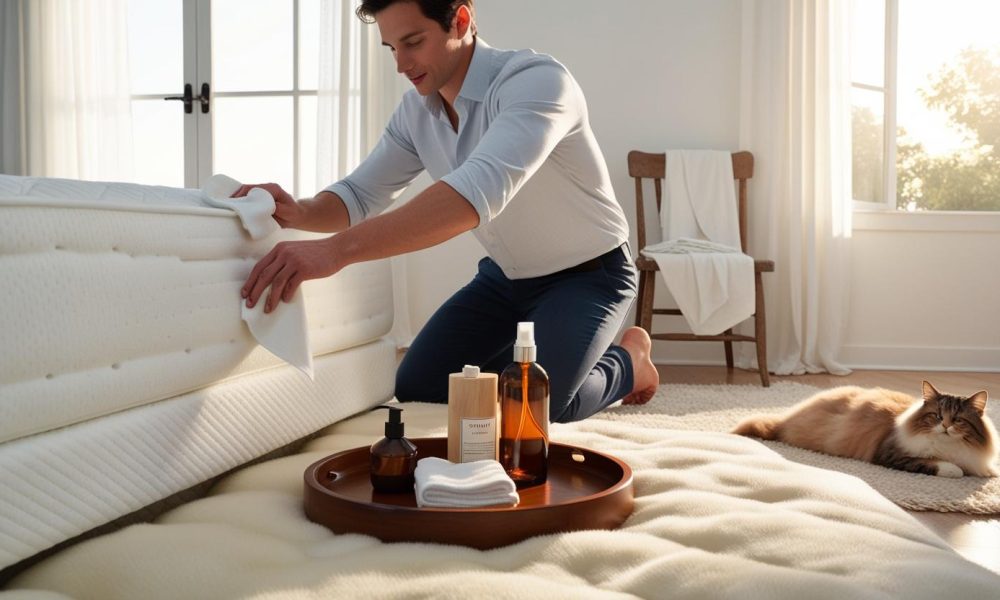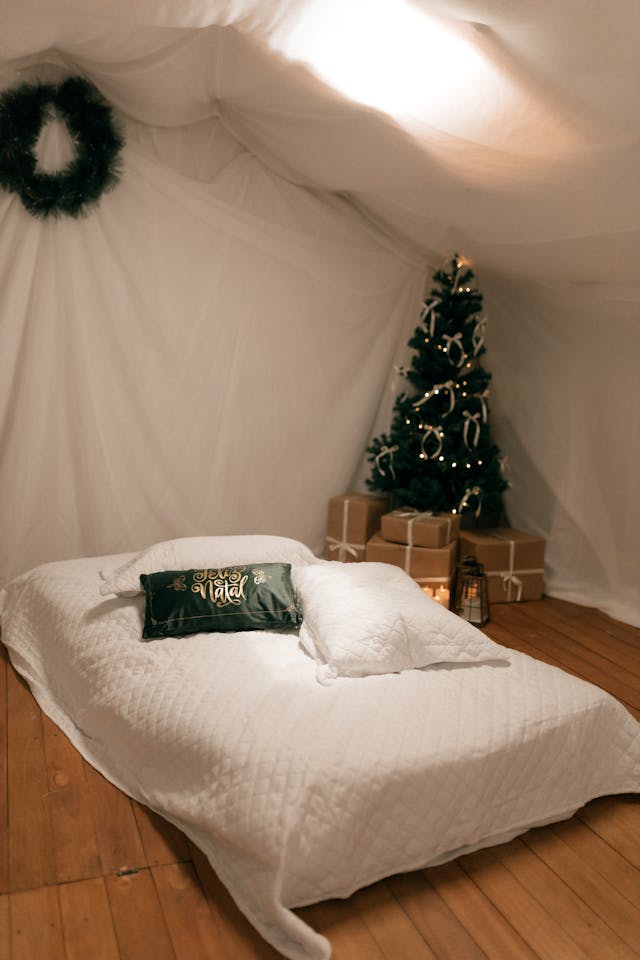Accidents happen—what matters is how you respond. This step-by-step guide shows you how to clean urine memory foam mattress stains quickly and safely with tools you already own. You’ll learn exactly what to use, how long to let it sit, how to dry memory foam properly, and how to prevent future messes with smart habits and the right protector.
How to Clean Urine Memory Foam Mattress (Complete Home Guide)
Key Takeaways: clean urine memory foam mattress
- Act fast: blot immediately to reduce staining and lingering odors.
- DIY works: white vinegar + baking soda can lift fresh stains and smells.
- For set-in messes, use an enzymatic cleaner designed for urine.
- Dry completely with airflow to prevent mold in memory foam.
- Protect your bed with a waterproof cover to stop repeats—simple and effective.
- At least one tip uses the exact phrase: clean urine memory foam mattress.
Why quick action saves your mattress
Answer first: Memory foam is absorbent, so speed prevents deeper penetration and tough odors. Blotting within minutes keeps cleanup simple.
Urine can wick through foam’s open cells fast. The earlier you remove moisture, the less you’ll need heavy treatments later. Keep clean towels handy for surprise spills.
What you’ll need (household items + a pro backup)
Answer first: Use paper towels, white vinegar, water, baking soda, and a vacuum. Keep an enzymatic cleaner on hand for set-in or pet accidents.
- Paper towels or clean cotton cloths (for blotting)
- Spray bottle with a 1:1 white vinegar and water solution
- Baking soda (fresh box for best absorbency)
- Upholstery vacuum attachment
- Optional: enzyme cleaner for urine (pet or old stains)
- Fan or open windows to speed up drying
For deeper hygiene tips, see our in-depth guide: Master Mattress Hygiene and Cleaning.
Step 1 — Strip the bed
Answer first: Remove sheets, protector, and bedding right away. Wash on warm to hot if fabric allows.
Check care labels first. Treat any sheet stains before the wash cycle to avoid setting them.
Related reading: Natural Mattress Cleaning (when you want greener methods that still work with organic bedding and eco-conscious sheets).
Step 2 — Blot, don’t rub
Answer first: Press down with towels to lift liquid; rubbing pushes urine deeper.
Work from the outside of the spot toward the center. Replace towels as they become damp.
Step 3 — Lightly mist with vinegar solution
Answer first: A 1:1 vinegar-water spritz helps neutralize odor compounds in fresh urine.
Spray enough to dampen but not soak the foam. Let it sit for 10–15 minutes, then proceed.
Authoritative how-to references: Sleep Foundation: Remove Urine Smell & Stains.
Step 4 — Blot again to remove loosened residue
Answer first: Press with fresh towels to lift the vinegar solution and dissolved odor molecules.
Swap towels frequently to avoid re-wetting the area.
Step 5 — Cover with baking soda and let it work
Answer first: Baking soda absorbs moisture and helps deodorize. Leave it for several hours or overnight.
For a lighter refresh, see: Clean Mattress with Baking Soda.
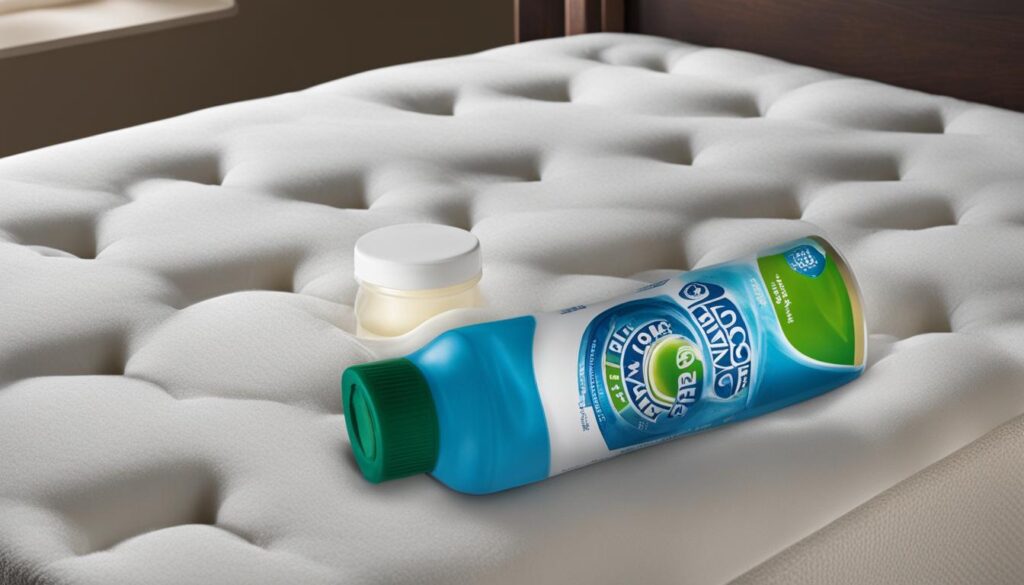
Step 6 — Vacuum thoroughly
Answer first: Vacuum the dried baking soda with the upholstery tool. Make multiple slow passes.
Check the canister or filter afterward; fine powder can build up.
Step 7 — Air-dry completely
Answer first: Drying prevents mildew. Aim a fan at the area and open windows if weather allows.
Memory foam dries best with airflow, not heat. Avoid hairdryers on high settings which can stress foam.
For stubborn or old stains (two proven options)
Answer first: Try a gentle hydrogen peroxide mix or switch to an enzyme formula made for urine.
- Peroxide mix (spot test first): 1 cup 3% hydrogen peroxide + 3 tbsp baking soda + a small drop of dish soap. Lightly mist, let dry fully, then vacuum.
- Enzymatic cleaner: Follow label directions; enzyme solutions break down urine proteins and odors deep in foam.
Learn broader stain removal strategies from the experts at
Sleep Foundation: Get Stains Out of a Mattress and
Better Homes & Gardens: How to Clean a Mattress.
If you’re addressing older stains specifically from pets, also see our focused guide: How to Clean Cat Pee Mattress.
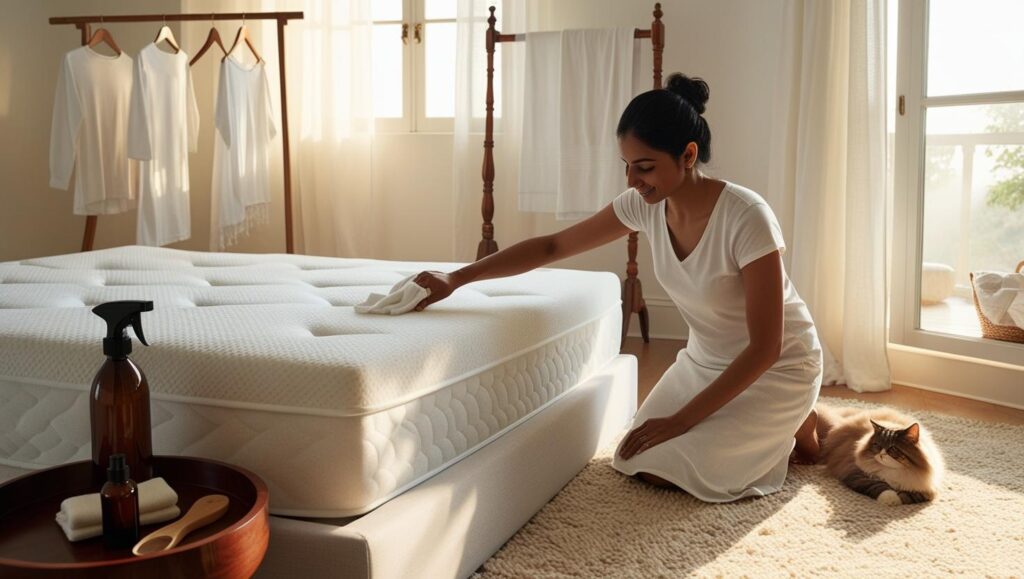
Cleaning up after pets (extra odor control)
Answer first: Use the same steps but prioritize enzymatic cleaners labeled pet-safe.
Cats and dogs can leave stronger odors. Repeat treatments and allow full drying between passes. For prevention, schedule outdoor breaks and reward consistent routines.
Pet parents often benefit from a protector—see our pick below.
Prevent future accidents with a waterproof protector
Answer first: A waterproof cover blocks liquids so cleanups never reach the foam.
Compare styles and care tips in Parachute’s Mattress & Bedding Protector Guide, and see Cozy’s buyer overview: Mattress Protectors: Benefits and Buying Guide.
Wash protectors regularly to keep them breathable and fresh. For laundering specifics, reference
Sleep Foundation: How to Wash a Mattress Protector.
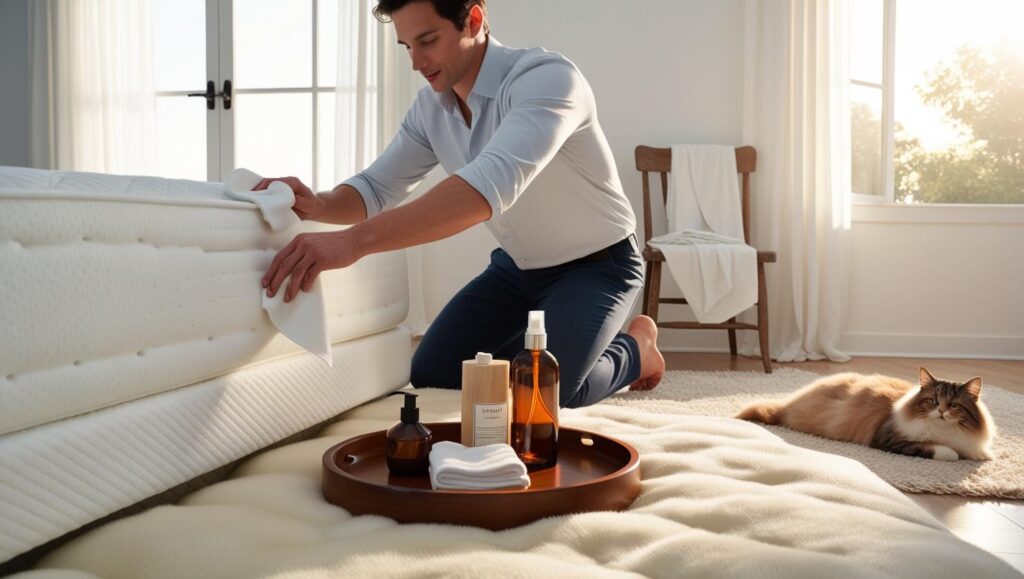
Drying time, safety notes, and what to avoid
Answer first: Expect 6–12 hours to dry, depending on room airflow and how wet the foam was.
- Avoid bleach: It can degrade foam and leave harsh odors.
- No soaking: Excess liquid slows drying and risks mildew.
- Gentle heat only: If needed, use room-temperature airflow rather than high heat.
Eco-friendly vs. conventional cleaning approaches
Answer first: Vinegar and baking soda are effective, low-impact choices; enzymes handle tough jobs without harsh bleaching agents.
Green methods pair well with sustainable bedding choices. If you prefer organic bedding or eco-conscious sheets, these cleaners keep your sleep setup healthier with minimal chemicals. For fabric choices that breathe and wash well, see our overview: Bedding Materials Guide.
Buyer’s guide: enzymes, protectors, and tools that make life easier
Answer first: Choose an enzymatic cleaner labeled for urine and fabrics, a fully waterproof protector, and a vacuum with an upholstery tool.
- Enzymatic cleaners: Look for instructions mentioning dwell time and “urine odor.”
- Protectors: Waterproof, breathable, and machine-washable are must-haves. See Parachute’s guide for styles and care.
- Routine care: Rotate your mattress and spot clean as needed (see Parachute Mattress Care Instructions).
Quick reference: the fast cleanup plan
Answer first: Blot → Vinegar mist → Blot → Baking soda → Vacuum → Air-dry.
- Blot immediately, don’t rub.
- Lightly mist a 1:1 vinegar-water mix, wait 10–15 minutes.
- Blot again with fresh towels.
- Cover with baking soda for several hours; vacuum when dry.
- Air-dry completely with good airflow.
For deeper stain walkthroughs, review Sleep Foundation: How to Clean a Mattress.
FAQ
- How long does it take to dry a cleaned memory foam mattress?
- Plan for 6–12 hours, depending on airflow and saturation. Use a fan and open windows to speed drying.
- Can I add essential oils for odor control?
- Use sparingly. A drop or two in the vinegar mix is fine after spot testing. Avoid heavy scents that can irritate skin or noses.
- Will these steps work on old stains?
- Yes, but older stains may need an enzymatic cleaner and multiple rounds. Allow full drying between treatments.
- Is this safe for all memory foam?
- Generally yes, but always spot test, especially with hydrogen peroxide mixes. Avoid bleach or soaking the foam.
- What’s the simplest way to prevent repeats?
- Use a waterproof protector and maintain consistent bedtime routines. See: Protector Buying Guide.
Final Thoughts
With the right approach, you can clean urine memory foam mattress stains quickly and safely—no stress required. Keep this guide handy, add a quality protector, and you’ll spend more time sleeping and less time scrubbing. For a deeper dive into routine upkeep, visit our full resource on mattress hygiene and cleaning from Cozy Bed Quarters.

